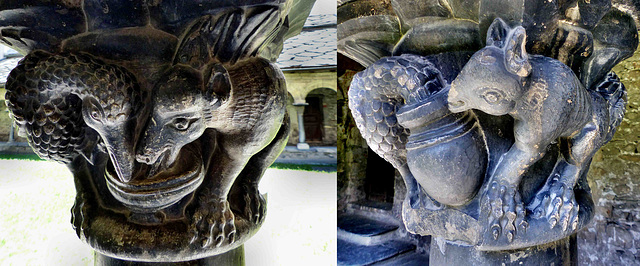Aosta - Collegiata di Sant'Orso
Aosta - Collegiata di Sant'Orso
Aosta - Collegiata di Sant'Orso
Aosta - Collegiata di Sant'Orso
Aosta - Collegiata di Sant'Orso
Aosta - Collegiata di Sant'Orso
Aosta - Collegiata di Sant'Orso
Aosta - Collegiata di Sant'Orso
Aosta - Collegiata di Sant'Orso
Aosta - Collegiata di Sant'Orso
Aosta - Collegiata di Sant'Orso
Aosta - Collegiata di Sant'Orso
Aosta - Collegiata di Sant'Orso
Aosta - Collegiata di Sant'Orso
Ravenna - Battistero degli Ariani
Ravenna - Battistero degli Ariani
Ravenna - Battistero degli Ariani
Ravenna - Battistero degli Ariani
Ravenna - Sant’Apollinare Nuovo
Ravenna - Sant’Apollinare Nuovo
Ravenna - Sant’Apollinare Nuovo
Ravenna - Sant’Apollinare Nuovo
Ravenna - Sant’Apollinare Nuovo
Ravenna - Sant’Apollinare Nuovo
Ravenna - Sant’Apollinare Nuovo
Ravenna - Sant’Apollinare Nuovo
Ravenna - Sant’Apollinare Nuovo
Ravenna - Sant’Apollinare Nuovo
Ravenna - Sant’Apollinare Nuovo
Ravenna - Sant’Apollinare Nuovo
Spoleto - San Paolo inter vineas
Pavia - San Pietro in Ciel d'Oro
Pavia - San Pietro in Ciel d'Oro
Pavia - San Pietro in Ciel d'Oro
Location
Lat, Lng:
Lat, Lng:
You can copy the above to your favourite mapping app.
Address: unknown
Lat, Lng:
You can copy the above to your favourite mapping app.
Address: unknown
See also...
Keywords
Authorizations, license
-
Visible by: Everyone -
All rights reserved
-
232 visits
Aosta - Collegiata di Sant'Orso


The collegiate church, dedicated to Saint Ursus of Aosta, existed here already in Carolingian times. Ursus, who may have been Irish, was a missionary, who supported the Bishop of Aosta. When an Arian became bishop of Aosta, Ursus and other canons left the cathedral and settled outside the walls of Aosta at the present site of the collegiate church of Saint Ursus.
A Romanesque church was built around 1000, but this church got rebuilt, altered and enlarged many times over the centuries.
The beautiful cloister, next to the basilica, was erected mid 12th century. It got restored end of teh 15th century, but 37 of the 42 original capitals are still "in situ". The now darkgrey capitals were white, when they were carved.
Here is an illustration of one of the best known of Aesop's fables.
The Fox and the Stork.
The fox invites the stork to eat with him and provides soup in a shallow bowl, which the fox can lap up easily; however, the stork cannot drink it with its beak.
The stork then invites the fox to a meal, which is served in a narrow-necked vessel. It is easy for the stork to access but impossible for the fox.
A Romanesque church was built around 1000, but this church got rebuilt, altered and enlarged many times over the centuries.
The beautiful cloister, next to the basilica, was erected mid 12th century. It got restored end of teh 15th century, but 37 of the 42 original capitals are still "in situ". The now darkgrey capitals were white, when they were carved.
Here is an illustration of one of the best known of Aesop's fables.
The Fox and the Stork.
The fox invites the stork to eat with him and provides soup in a shallow bowl, which the fox can lap up easily; however, the stork cannot drink it with its beak.
The stork then invites the fox to a meal, which is served in a narrow-necked vessel. It is easy for the stork to access but impossible for the fox.
- Keyboard shortcuts:
Jump to top
RSS feed- Latest comments - Subscribe to the comment feeds of this photo
- ipernity © 2007-2024
- Help & Contact
|
Club news
|
About ipernity
|
History |
ipernity Club & Prices |
Guide of good conduct
Donate | Group guidelines | Privacy policy | Terms of use | Statutes | In memoria -
Facebook
Twitter

Sign-in to write a comment.